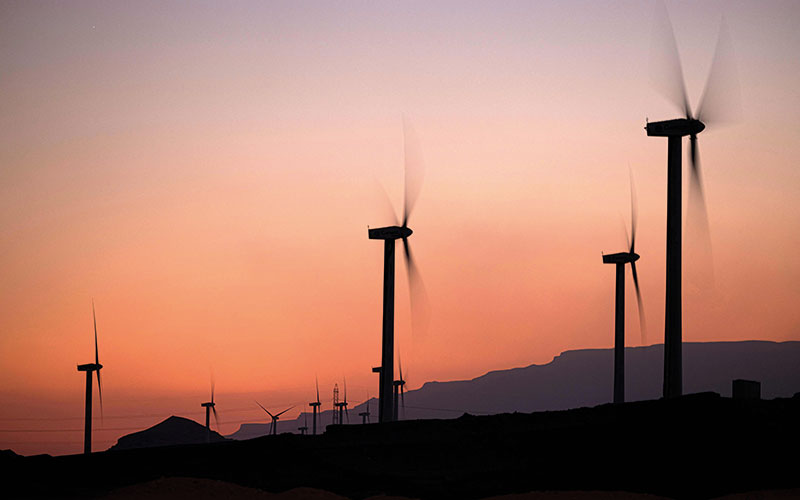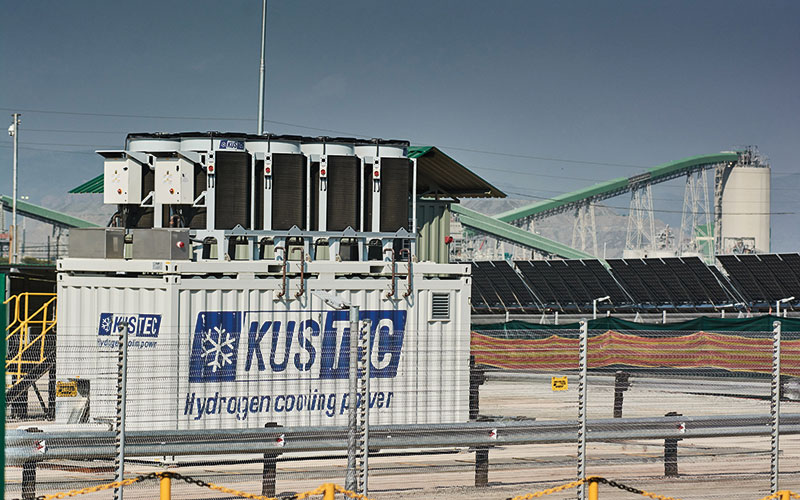Africa's clean energy revolution
Africa is accelerating its energy transition with investments in green hydrogen, carbon capture and energy storage, fostering sustainable development and collaboration, say Idoko Isaac and Hope George at LES Energy Services Ltd, Nigeria

Africa is at a pivotal moment in its energy transition journey. With a rapidly growing population and increasing energy demand, the continent faces challenges and opportunities in its quest for sustainable development. In recent years, there has been a surge of interest and investment in green hydrogen, carbon capture, energy storage and renewable resources across Africa, promising to revolutionise the energy landscape while tackling energy poverty. According to the International Energy Agency, 600 million people in Africa lack access to electricity, primarily in rural areas.
Demographic trends and energy demand
Africa’s population is on a trajectory of exponential growth, with the UN projecting that it will double by 2050 to reach 2.5 billion people. This substantial increase in population will naturally lead to higher energy demand to power homes, businesses, transportation and industries. Meeting this demand in a sustainable way will be crucial for the continent’s socio-economic development.
International investments and collaborative efforts
Africa’s energy transition is being bolstered by strategic partnerships and investments from international stakeholders. Countries and organisations from around the world are collaborating with African governments and businesses to drive forward clean energy projects and initiatives. These partnerships bring not only financial resources but also technological expertise, knowledge transfer and opportunities to build capacity.
The UAE has emerged as one of the top investors in Africa, ranking fourth globally behind China, the EU and the US. Having invested more than US$12bn to help unlock Africa’s clean energy potential, the UAE pledged a further US$4.5bn last year to help speed up the development of clean energy projects.
Building on the UAE’s Etihad 7 initiative to supply clean energy to 100 million Africans by 2035, UAE-based Masdar is advancing its US$10bn 10GW by 2030 growth plan across Angola, Uganda, the Republic of Congo, Kenya, Mozambique and Zambia.
According to Masdar, Africa possesses a theoretical clean energy capacity of 850TW from solar and wind sources and could secure up to 10% of the global green hydrogen market.
Green hydrogen in Africa 43 CAPEX projects worth US$153bn Countries to watch Egypt, Morocco, Mauritania, Algeria, South Africa, Namibia
Africa’s green hydrogen ambitions
Green hydrogen, produced through water electrolysis using renewable energy, has emerged as a game-changer in Africa’s quest for clean energy. EICDataStream lists 43 major CAPEX projects worth US$153bn across Africa. Initiatives such as South Africa’s SA-H2 initiative, Namibia’s US$3bn Tsau Khaeb project with plans for 3GW of clean hydrogen and 7GW of solar and wind energy, and Egypt’s US$13bn Acme green hydrogen plant, which will produce 2.2m tonnes of hydrogen per year, highlight the continent’s ambition in this sector.
Siemens Energy, Enel Green Power and TotalEnergies have all announced investment in green hydrogen projects. Additionally, partnerships with international organisations such as the Green Climate Fund and the World Bank are providing crucial financial support for green hydrogen infrastructure development in Africa.

CCS in Africa
Addressing carbon emissions is a critical aspect of Africa’s energy transition strategy. Carbon capture and storage (CCS) technologies offer a promising solution to mitigate emissions from power generation and manufacturing. In South Africa, the Leandra Carbon Capture and Storage Pilot Project stands out as one of the world’s largest CCS initiatives, aiming to capture millions of tonnes of CO2 annually from Sasol’s coal-to-liquids facility.
CSS in Africa 4 CAPEX projects worth US$0.4bn Countries to watch Egypt, Angola, South Africa
Furthermore, African countries are exploring opportunities for natural carbon capture through reforestation and sustainable land management practices. Projects such as the Great Green Wall initiative, spanning multiple countries in the Sahel–Sahara region, aim to restore degraded land and sequester carbon while promoting biodiversity and combating desertification.
The Global CCS Institute, backed by major energy companies and governments, is providing technical expertise and funding for CCS research and deployment in the region. Moreover, initiatives such as the African Development Bank’s Climate Investment Funds are catalysing private sector investment in CCS infrastructure across Africa.
Harnessing resources for energy storage
Africa’s abundant mineral reserves, including cobalt, manganese, platinum, lithium and copper, play a crucial role in manufacturing the batteries and other green technologies needed for reliable energy storage. Projects such as Mozambique’s US$150m 50MW Nacala Energy Storage Project and Xlinks Morocco–UK Power Project showcase Africa’s potential for grid-scale energy storage, crucial for integrating intermittent renewable sources, expanding energy access in remote areas and exporting electricity abroad.
Pumped hydro storage is another promising option. It leverages Africa’s abundant water resources to store excess energy during periods of low demand and release it when needed. Once completed, the Grand Inga Dam project in the Democratic Republic of Congo could become the world’s largest hydroelectric facility, providing clean energy and supporting regional energy integration.
Engie, GE Renewable Energy and Fluence are actively involved in developing energy storage projects across Africa. Additionally, multilateral institutions such as the African Development Bank and the International Finance Corporation are providing financial support and advisory services for energy storage initiatives in the continent.
Africa’s role in a clean energy future
Africa’s energy transition journey is marked by a commitment to sustainability, innovation and collaboration. Initiatives focused on green hydrogen, carbon capture and energy storage are at the forefront of this transition, offering solutions to address climate change, expand energy access and enhance energy security for its population, as well as drive economic development. With the support of international investors and strategic partnerships, Africa is poised to emerge as a leader in the global transition to a clean energy future.
By Idoko Isaac, Head of Technical Sales and Hope George, Commercial Manager, LES Energy Services Ltd, Lagos, Nigeria
Image credit | Getty






Follow us
Advertise
Free e-Newsletter